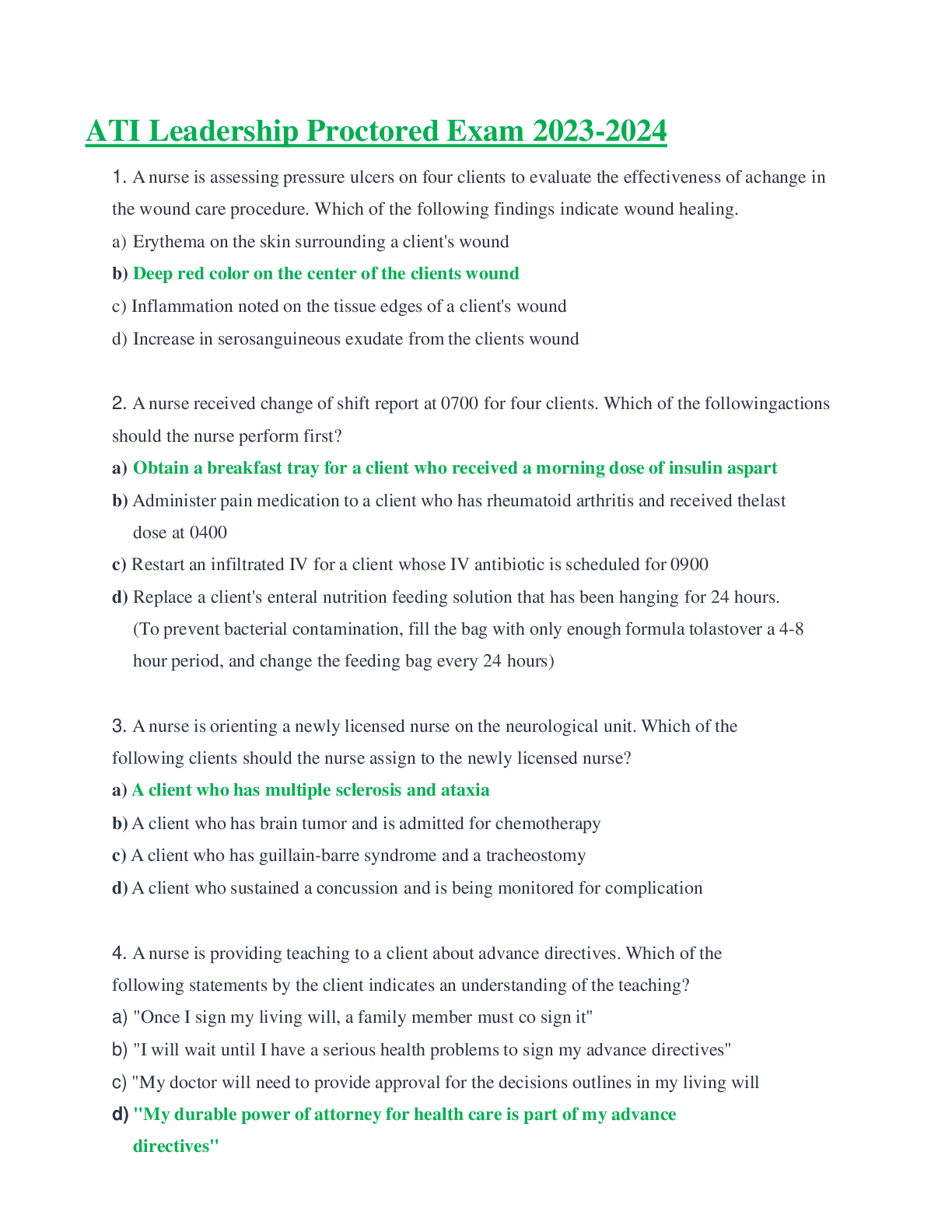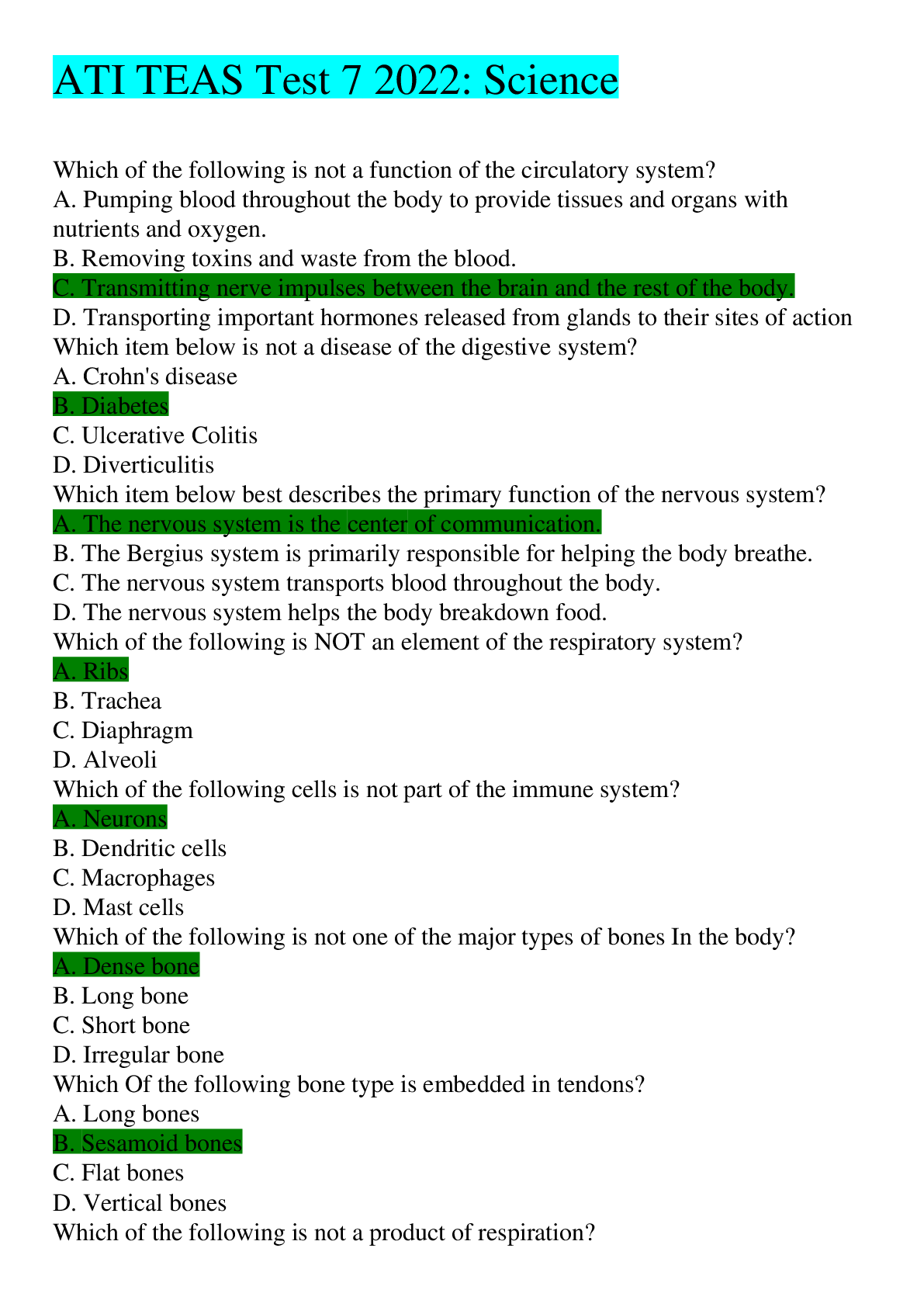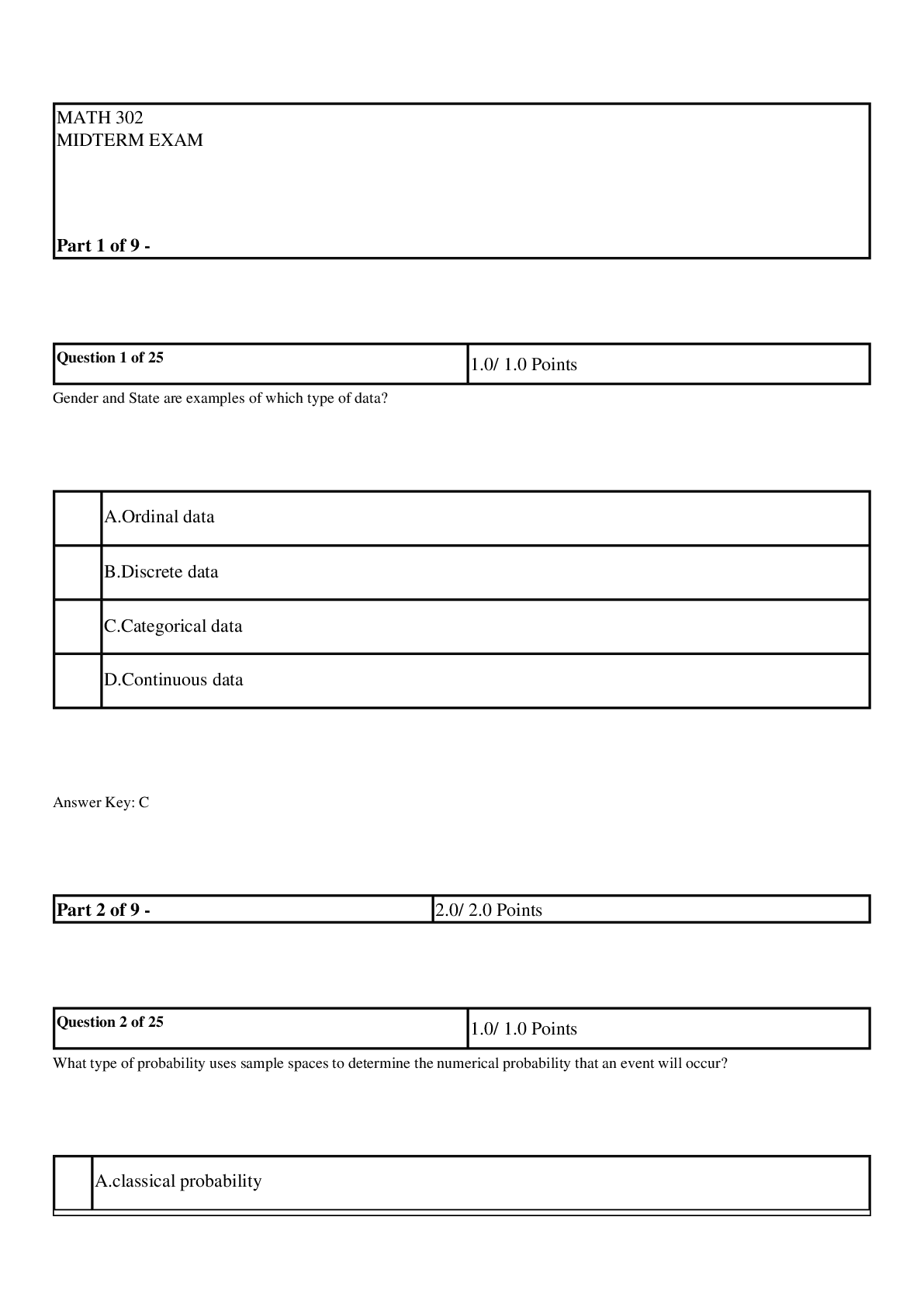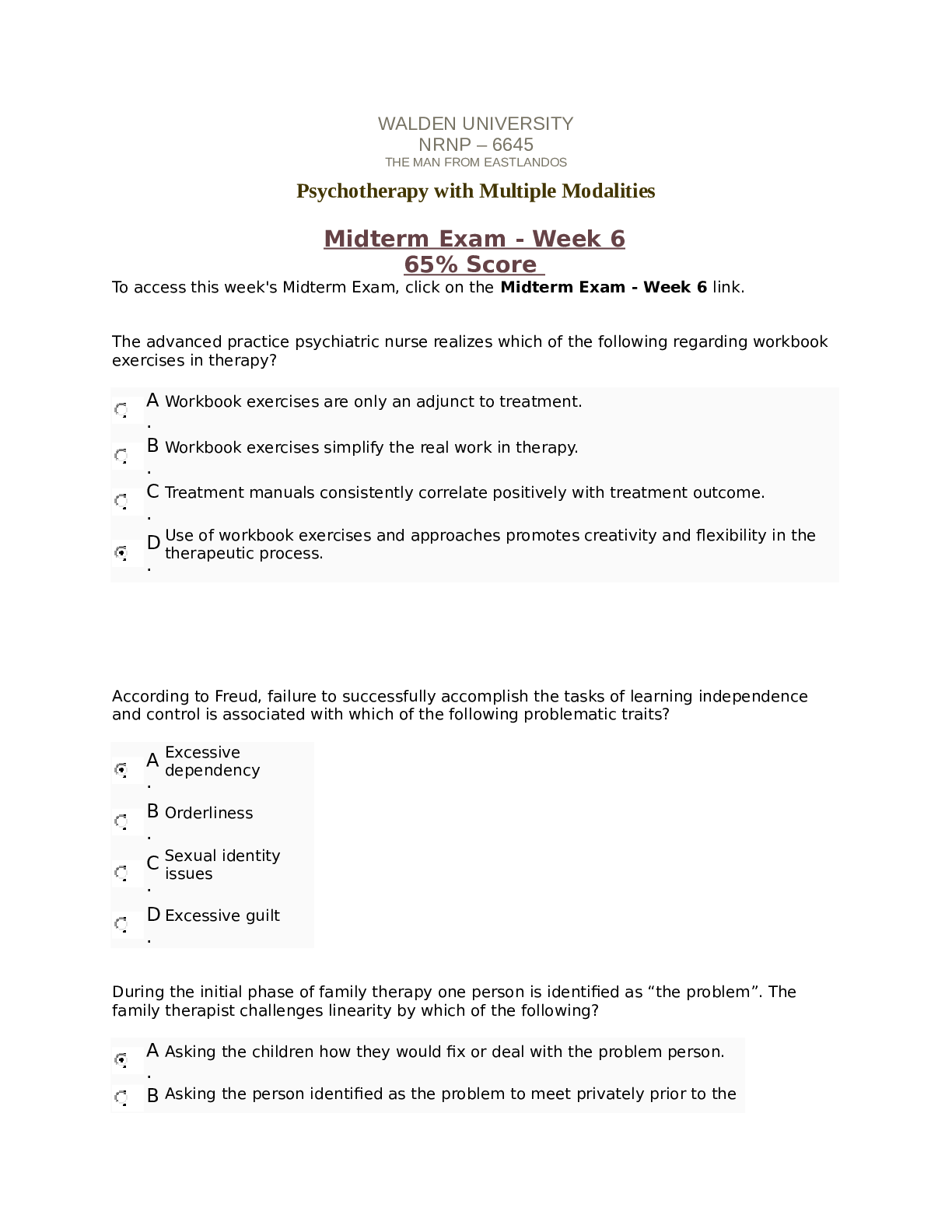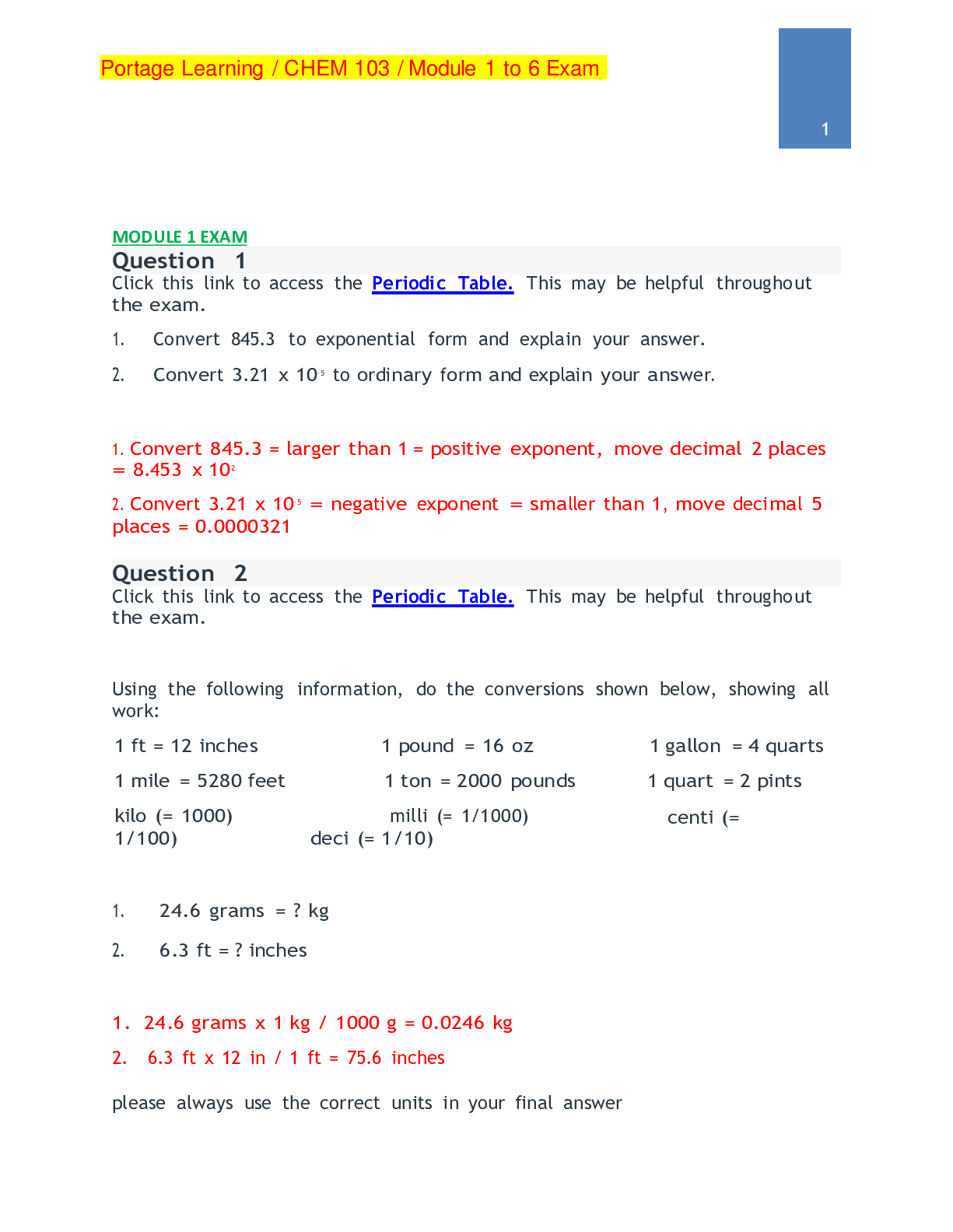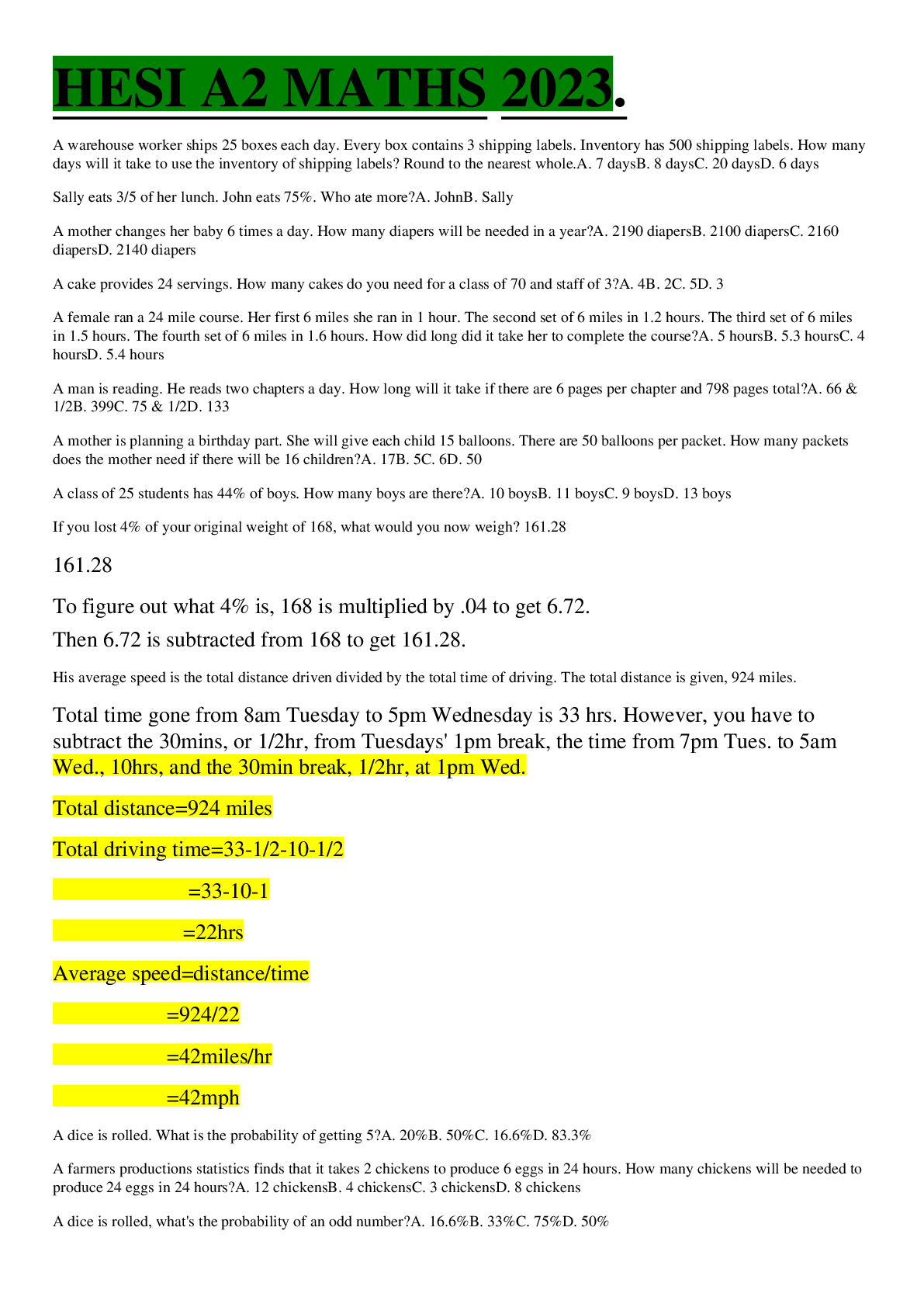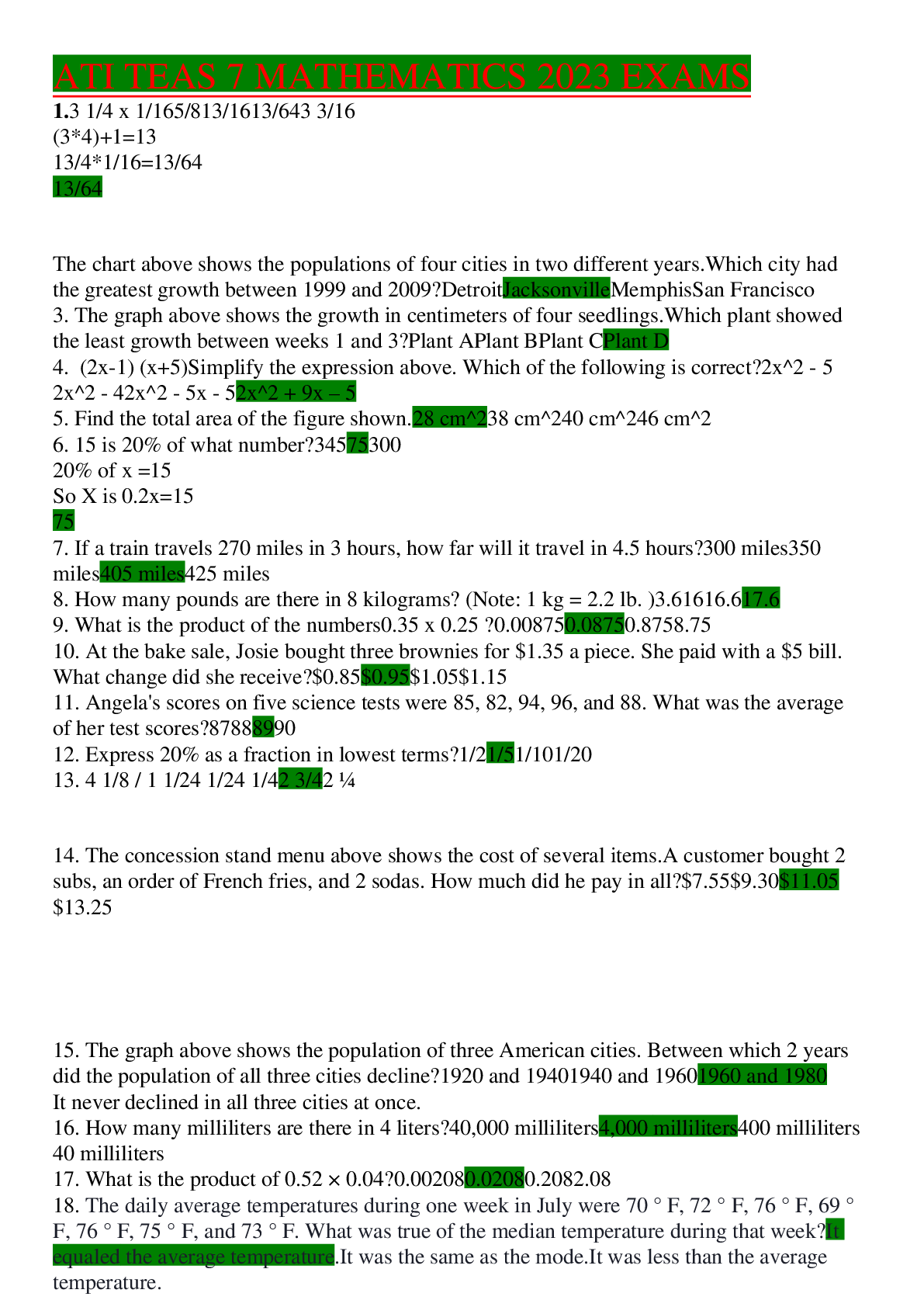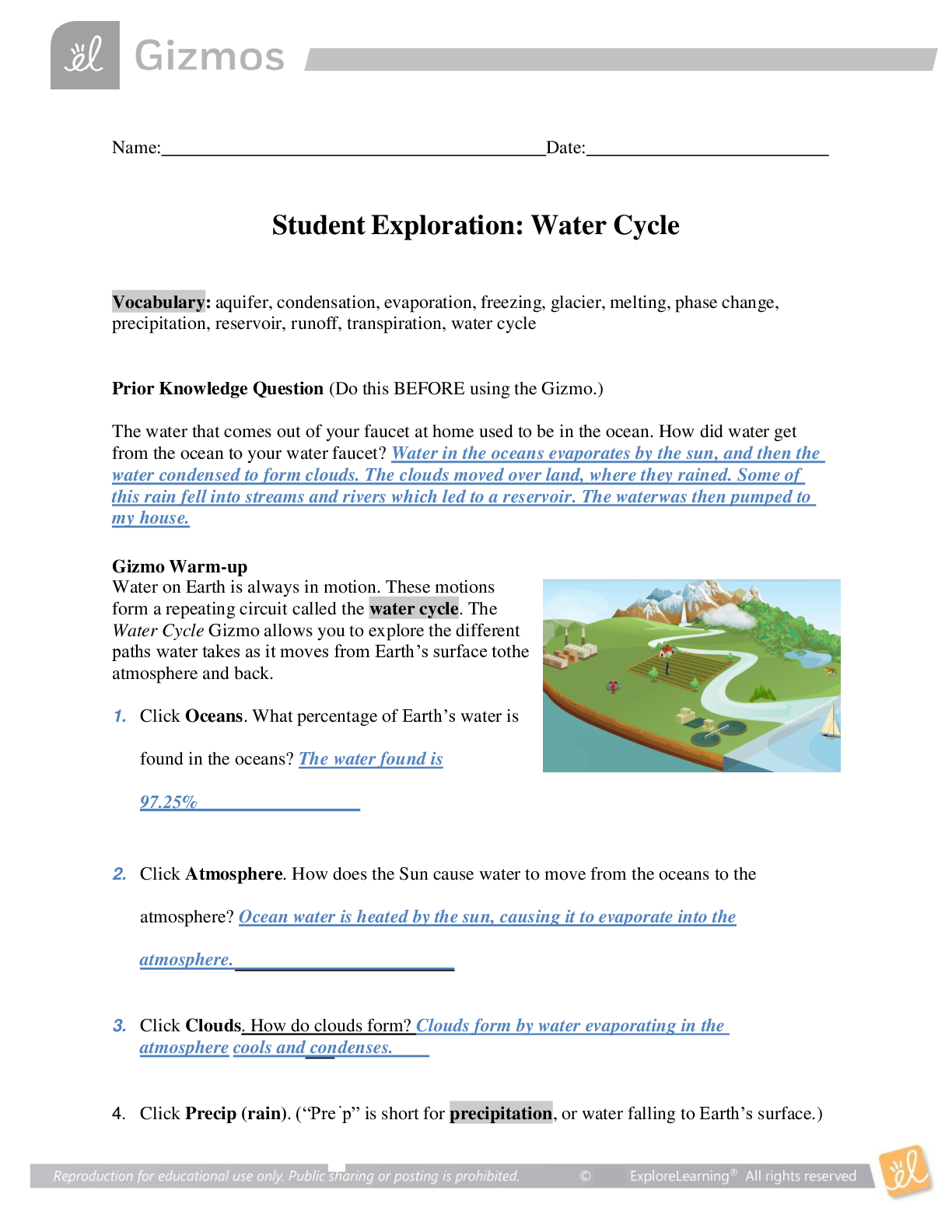Gizmos Student Exploration : Carbon Cycle Answer Key
Document Content and Description Below
Student Exploration: Carbon Cycle Vocabulary: atmosphere, biomass, biosphere, carbon reservoir, carbon sink, fossil fuel, geosphere, greenhouse gas, hydrosphere, lithosphere, photosynthesis Prio... r Knowledge Questions (Do these BEFORE using the Gizmo.) In the process of photosynthesis, plants take in carbon dioxide (CO2) from the atmosphere and water (H2O) from the soil. Using the energy of sunlight, plants build molecules of glucose (C6H12O6) and oxygen (O2). 1. How do plants on Earth affect the amount of carbon in Earth’s atmosphere? Plants absorb a great part of the carbon dioxide produced for them to do photosynthesis, so the levels of CO2 that raises to the atmosphere decrease in comparison to the production of it. 2. Animals eat plants and produce carbon dioxide and water. How do animals affect the amount of carbon in Earth’s atmosphere? Animals exhale carbon dioxide, a major part of it is consumed by the plants of the environment, but a part manages to raise to the atmosphere. Through food chains, animals eat or absorb the carbon dioxide found in plants or animals. Gizmo Warm-up The Carbon Cycle Gizmo allows you to follow the many paths an atom of carbon can take through Earth’s systems. To begin, notice the black carbon atom in the Atmospheric CO2 area, highlighted in yellow. The glowing blue areas represent possible locations the carbon atom could go next. 1. From Earth’s atmosphere, where can the carbon atom go next? The carbon atom goes to the oceanic CO2. 2. Click on Land plants and read the description. How did the carbon atom get from the atmosphere to a plant? Through the process of photosynthesis, carbon dioxide is pulled from the air to produce food. 3. Select Land animals. How did the carbon atom get from land plants into the animals? Through food chains, land animal eat plants or animals that also eat plants, the carbon dioxide they store moves to the animal. 4. Select Atmospheric CO2. How did the carbon atom get from land animals back to the atmosphere? In the process of cellular respiration, animals and plants break down glucose to produce energy, releasing carbon dioxide and water into the atmosphere. Introduction: Earth can be divided into four systems. The atmosphere is the air above Earth’s surface. The hydrosphere is composed of all of Earth’s water. The geosphere is the rocky, non-living part of Earth. The biosphere consists of all living things, including people. Some scientists use the term “anthroposphere” to describe everything made or modified by humans. Question: How does carbon move between the atmosphere, hydrosphere, biosphere, and geosphere? 1. Explore: Use the Gizmo to create a path for carbon that begins and ends in the atmosphere. Fill in the steps in the path below. Then, label each location with the system it represents. Finally, summarize very briefly how the carbon atom got to that location. Carbon path System How it got there Atmospheric CO2 Atmosphere Atmospheric CO2 comes from volcanoes, burning fossil fuels, and other sources. Oceanic CO2 Hydrosphere CO2 dissolves in cold ocean surface waters. The colder the water, the more CO2 can be dissolved. Shells/coral Biosphere Marine animals use dissolved oceanic CO2 as a source of carbon for their calcium carbonate shells and skeletons. Limestone Geosphere Shells, corals, and other carbonate structures pile up on the ocean floor. These layers compresses into limestone. Lithosphere Geosphere Limestone is part of Earth’s lithosphere. An enormous amount of Earth’s carbon is stored in limestone. Volcano Geosphere Rock in the Earth’s crust are heated to high temperatures and melted, so carbon dioxide forms and is dissolved in magna below volcanoes. Atmospheric CO2 Atmosphere The volcanic eruptions allow the dissolved CO2 in magna to be released into the Earth’s atmosphere. 2. Create: Click Reset. Use the Gizmo to create a path in which the carbon atom goes from the atmosphere to the hydrosphere, biosphere and geosphere. Describe each transition briefly. Atmosphere Hydrosphere Biosphere Geosphere Atmospheric CO2 Oceanic CO2 Marine plants/algae Sediments Volcanoes, burning CO2 dissolves in cold Plants and algae go Uneaten marine plants fossil fuels, and ocean surface waters through and algae drift down to other sources. and is stored deep in the ocean photosynthesis and remove the carbon the ocean floor and become part of the dioxide. marine sediments. 3. Explain: Based on the Gizmo, explain how the following transitions might take place: A. Describe at least two ways that carbon can get from a land plant to the atmosphere. Land plant>soil>atmospheric CO2: Land plants die and are decompose, going to the soil, where a variety of animals break down organic materials, releasing carbon dioxide into the atmosphere. Land plants>coal>power plant>Atmospheric CO: Land plants that are compressed and made into coal and natural gases, then power plants burn this coal and natural gases to generate electricity, and finally, the carbon dioxide produced from the burning fuels is released into the atmosphere. B. Describe at least two ways that carbon can get from the atmosphere to the hydrosphere. Atmosphere> exposed rocks> oceanic CO2> atmospheric CO2: carbon dioxide from the atmosphere dissolves into rainwater and forms a weak acid that slowly dissolves rock. This releases bicarbonate ions and many other ions that are carried to the ocean by streams and rivers. When the water in the ocean [Show More]
Last updated: 1 year ago
Preview 1 out of 7 pages
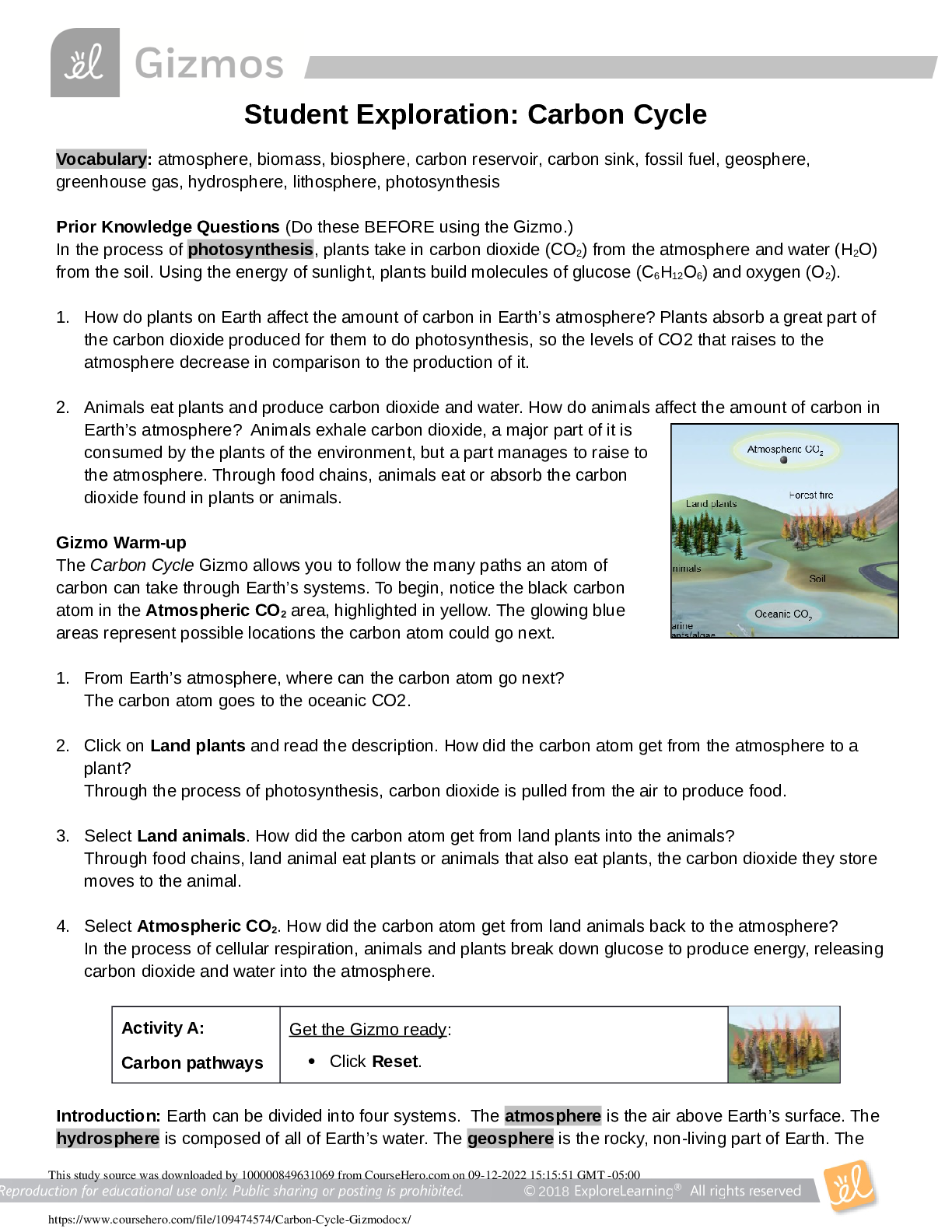
Buy this document to get the full access instantly
Instant Download Access after purchase
Add to cartInstant download
We Accept:

Reviews( 0 )
$12.00
Document information
Connected school, study & course
About the document
Uploaded On
Oct 04, 2022
Number of pages
7
Written in
Additional information
This document has been written for:
Uploaded
Oct 04, 2022
Downloads
0
Views
148

